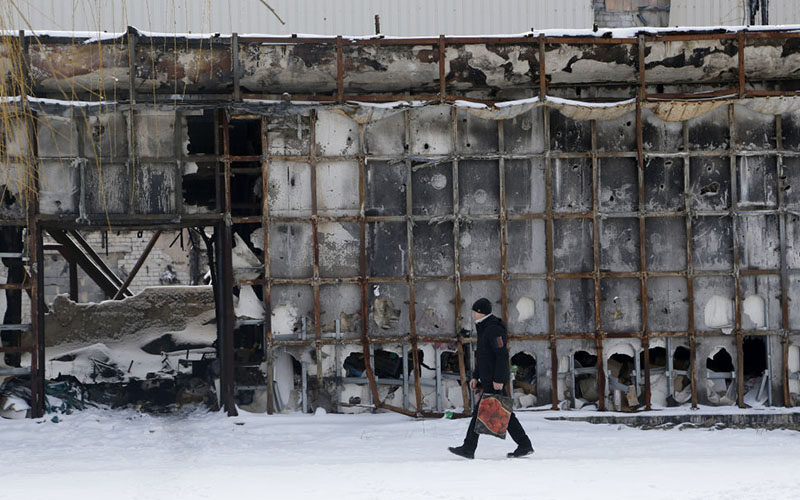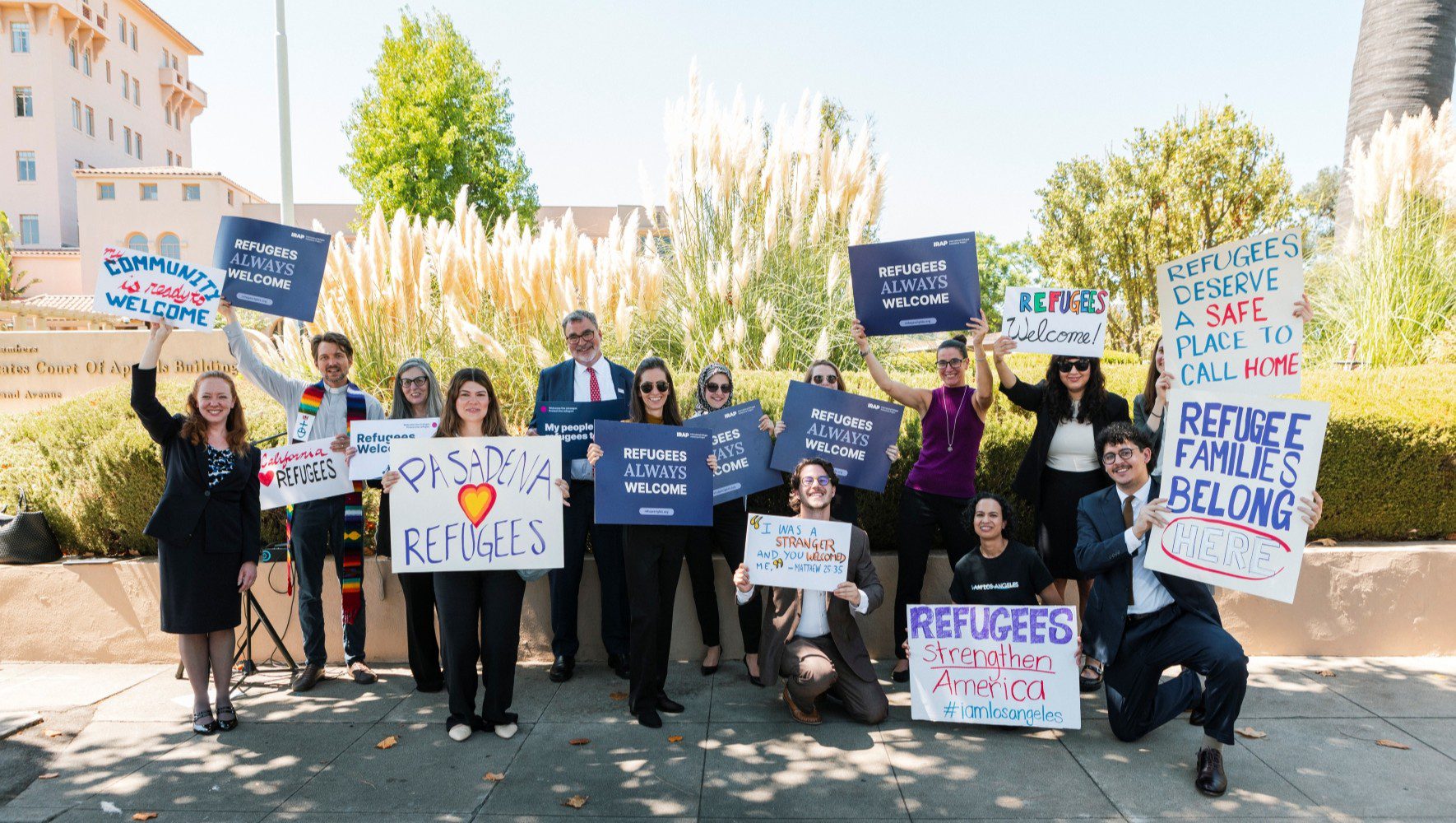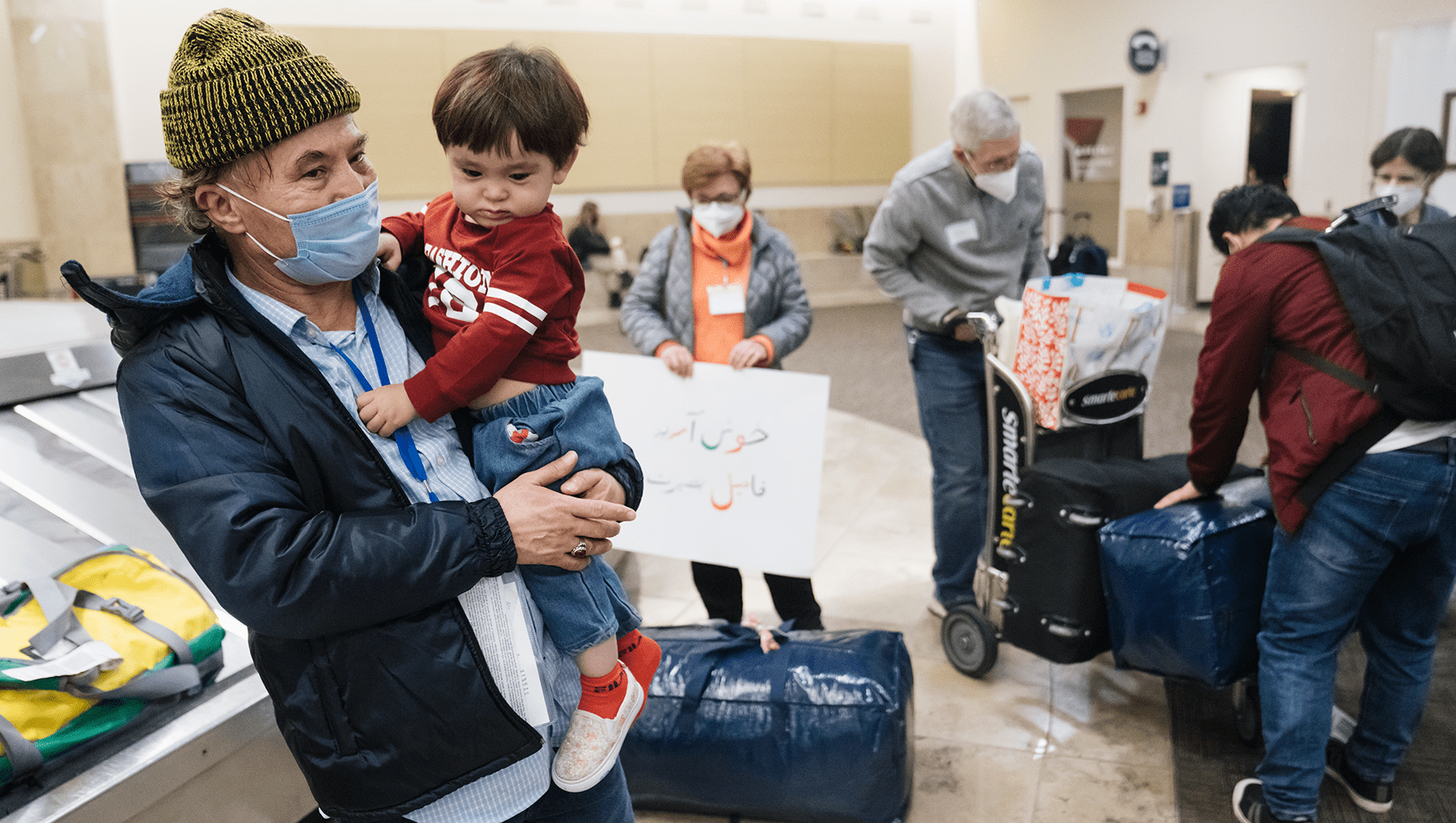As Tension Rises in Ukraine, HIAS Partner R2P Prepares
By Sharon Samber, HIAS.org
Jan 26, 2022

A local resident walks past a damaged building in the self-proclaimed Donetsk People's Republic (DNR), in Donetsk, Ukraine, January 30, 2022.
(Anadolu Agency via Getty Images)
Over the last few months, as Russia has ramped up the tension with Ukraine, a major concern for European nations and refugee agencies has been the mass population displacement that could occur in the event of a significant military action. Now, with an estimated 100,000 Russian troops massed near the Ukrainian border, humanitarian organizations, including HIAS’ partner in the region, are preparing and strategizing around a potential new refugee crisis.
“There is deep concern at HIAS over the potential humanitarian impact on the people of Ukraine,” said Lauren Pucci, HIAS’ senior director of emergency and humanitarian programs. HIAS has worked in Ukraine since 2001, initially establishing an office to help Ukrainian Jews and other religious minorities seeking to migrate to the United States. In 2013, a new organization, Right to Protection (R2P), was formed. HIAS is now actively coordinating with R2P on contingency plans and responses, according to Pucci.
R2P is an independent NGO based in Kyiv with offices across Ukraine, including in government-controlled areas of Donbas, East Ukraine. R2P currently has 162 specialists working in 10 cities providing legal assistance, monitoring and advocating for internally displaced people (IDPs); conflict-affected persons residing in or near non-government controlled territories; refugees; asylum seekers; and stateless persons.
R2P is led by Ukrainians, including some who are themselves displaced, but works closely and in partnership with HIAS. It is a model of a localized approach that solves “humanitarian challenges with local development-based approaches,” says HIAS CEO and President Mark Hetfield.
UNHCR estimates that in Ukraine there are already at least 1.6 million conflict-affected persons, including 734,000 internally displaced people; nearly 36,000 stateless persons; and nearly 5,000 refugees and asylum seekers.
Hetfield recognizes the humanitarian crisis ahead if Russia invades Ukraine. “It could lead to untold numbers of refugees crossing the border, even more internally displaced persons within Ukraine, and even greater danger and misery for the thousands of asylum seekers who have already fled to Ukraine,” he said.
R2P values the ongoing support and mentoring from HIAS and so does not feel alone at this critical time, according to R2P President Aleksandr Galkin.
“We are developing a response contingency plan based on several scenarios to meet emergency needs of our current and new beneficiaries,” Galkin said. “We are working in close cooperation with the humanitarian community in Ukraine and specifically with HIAS HQ and HIAS Europe, and we stand ready to help people in their dire situations, if needed.”
There is hope that escalating tensions between NATO and Russia will end with a peaceful resolution this winter, but there are many who believe Russia will instead launch some kind of attack, which could have catastrophic consequences. Alexander Vindman, a retired U.S. Army Lieutenant Colonel, former Director for European Affairs at the National Security Council, and former HIAS client, sees a full-scale attack as a near inevitability and has called upon the U.S. to send military assistance to Ukraine.
Mindful of the refugee situation, Vindman wrote in Foreign Affairs that in conjunction with international humanitarian organizations, the U.S. and its European allies and partners must establish humanitarian corridors with both the resources and personnel to protect refugees.
“Tens of thousands—if not hundreds of thousands or even millions—may flee the conflict, either as internally displaced persons within Ukraine or as refugees in neighboring countries,” he wrote. “The United States, the United Kingdom, and the EU should accommodate this influx of asylum seekers and refugees with emergency special immigrant visas of the kind made available to Afghans fleeing the Taliban takeover of their country last summer.”


